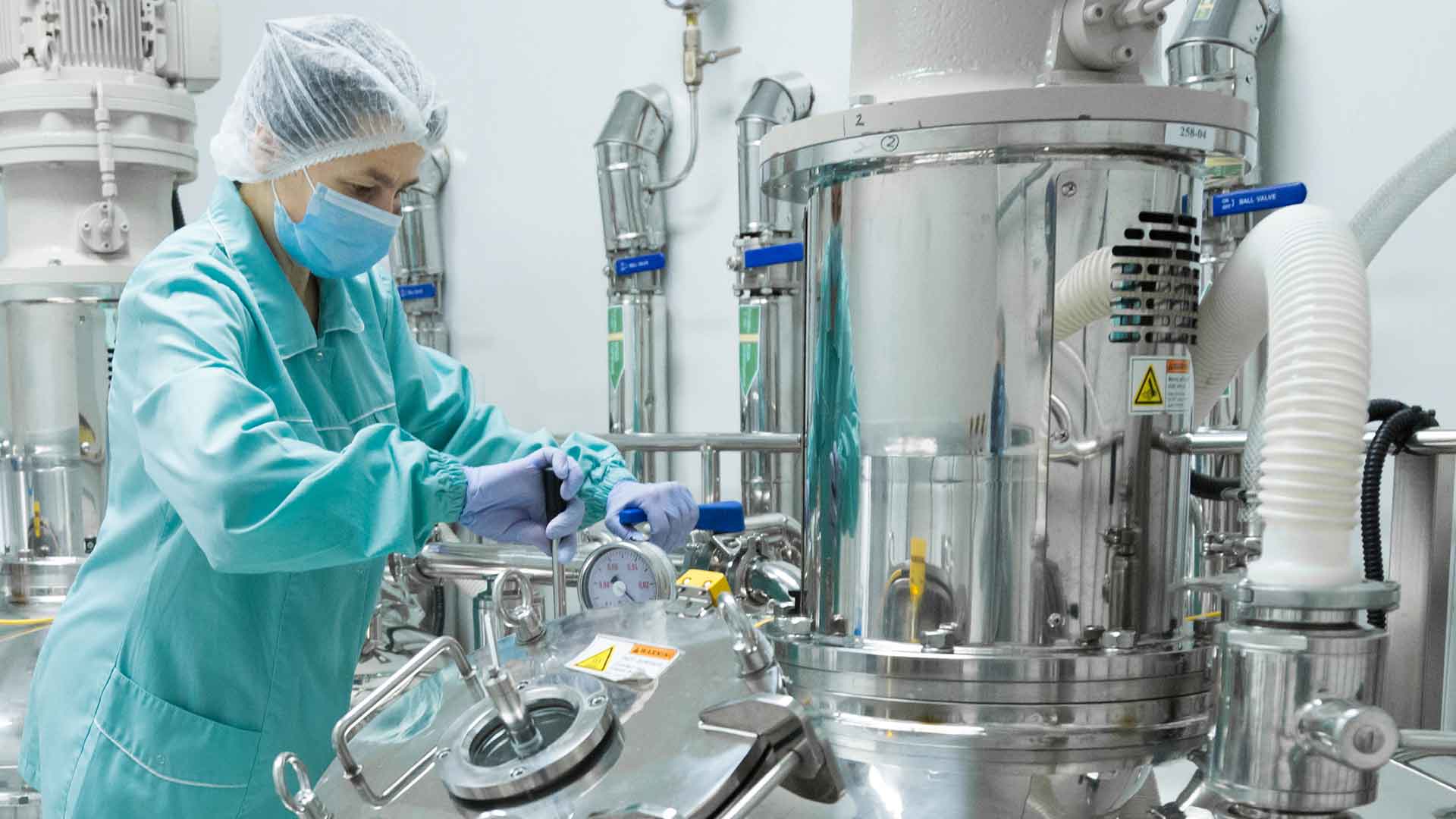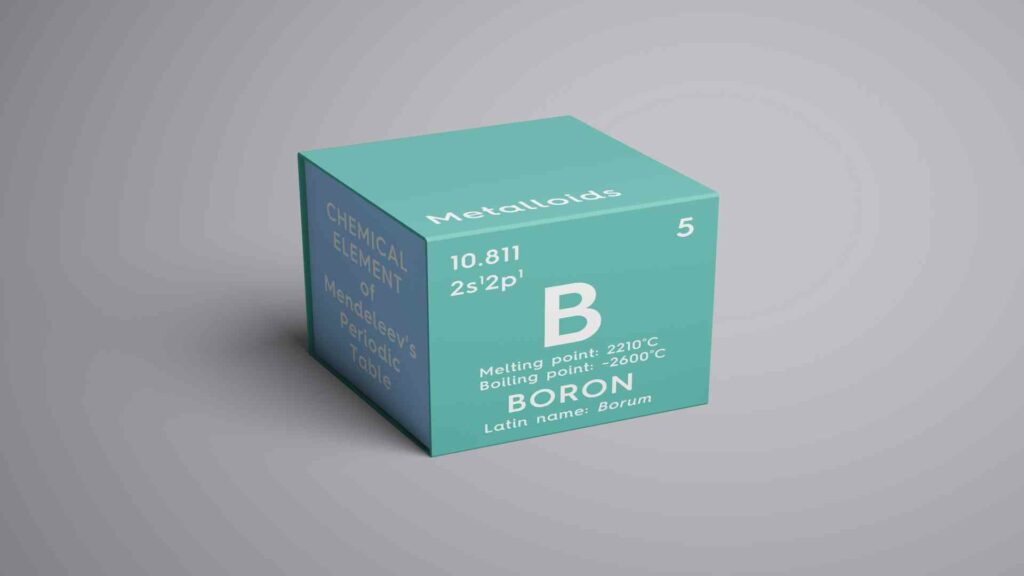Boron Research Areas
Research into boron ranges from commercial technologies to extensive studies in chemistry, notably boron nitride nanotubes and hydrogen-boron fusion. In commercial endeavours, boron is a new-age material stock driving innovation and performance in various fields, including food security, microelectronics, medical research, and even finding alternatives for fuel.

Boron Research Areas
A Short History of Boron Research
Boron’s research dates back to humble beginnings in the field of inorganic chemistry. In the first half of the 20th century, diborane synthesis and electronic structure elucidation led to the development of boron-hydride chemistry. This included polyhedral cluster compounds and organoboron. Later, these were recognized with three Nobel Prizes (1976-1979 and 2010). Despite all this success, boron-chemistry has not yet reached its peak. There are still many exciting developments in boron-containing compounds.
Examples of ongoing developments include the discovery of new synthesis methods that use organoboron compounds in reagents or catalysts, new activation modes for small molecules/bonds mediated by boron compounds, new opportunities to create chemical space and function through BN/CC isosterism, new boron-doped, carbon-rich materials with distinct optoelectronic characteristics and finally the discovery of new applications for boron clusters.
More recently, many institutions and universities have made significant contributions to boron research. Departments have been assigned and devoted to boron research. For example, in April 2016, the German Science Council supported two research building projects at Bavarian Universities. One of them for an “Institute of Sustainable Chemistry and Catalysis with Boron as a Key Element” (ICB) of the Julius-Maximilians-University of Wurzburg.
World-renowned experts founded Boragen for boron chemistry resesarch in 2015. The research centre is headquartered at Research Triangle Park in North Carolina. Boragen uses boron’s unique characteristics to develop and design novel solutions that address crop protection, animal and human health needs. Boragen, Inc. partnered with the University of Toronto, University of Vermont, and the University of California, San Francisco, to continue developing innovative solutions based on boron chemistry.
In June 2004, the Department of Science and Technology of Liaoning Province approved the establishment of the Engineering and Technology Research Center of Comprehensive Development and Utilization of Boron Resources. This centre focuses on research in the comprehensive development and utilization of boron resources, new production technology for boron chemicals, and new preparation processes for boron-containing material.
Some research projects carried on by the institution include the Evaluation System for Boron Resources Development, Study on a New Process for Borax Made From Boron Rich Slag; Study of New Preparation Processes of Fe-SiB Alloy; Preparation and application of boron-containing Insulation Materials; Preparation & Application of Boron containing Glass Fibers; Research about the extensive use of boron mud and the comprehensive utilization boron-containing wastes, etc.
On Osaka Prefecture University’s Nakamozu Campus, the Research Center for Boron Neutron Capture Therapy has been established. This facility is equipped with the most advanced equipment and systems and hosts initiatives such as trials that focus on developing new boron compounds.
Much more research has been done on boron, with many more institutions and scientists involved. A general discussion on the significant research done in the field of boron follows, describing how it has proved to be helpful, and the potential it carries.
Boron and Food Utilization Research

Boron Research in Foods
Boron’s role in food security is twofold. It is mainly used to improve fertilizers’ efficacy for plant growth and development while increasing crop yield and enhancing nitrogen fixation rates in soils deficient in boron. Secondly, it is a micronutrient that supports human health. It is a dynamic micronutrient found in human and animal physiology trace amounts.
Boragen, Dr. Leah Cowen, and her research group at the University of Toronto aims to answer a fundamental question and identify new biological targets accessed via boron chemistry. Boragen is a pioneer in crop protection fungicide development. Global food security is at risk from fungal pathogens. They can contaminate food supplies, cause epidemics in staple crops, and even produce cancer-causing chemicals.
Resistance is a serious global health concern, as one of the most commonly used fungicide classes is also used in medicine. Dr. Cowen stated a need for novel fungicides with different MOAs to anti-fungals used as medicine. Dr. Liu observes that although each project addresses a different application they all demonstrate the wide-reaching potential for boron chemistry.
Boragen and the University of Vermont are working together to find a better way to combat Cryptosporidium paravum in cattle. These protozoa cause diarrhoea in calves and slow down growth. It also increases labour costs, which can cause a financial burden for the dairy industry. Although there are not many treatment options, the company plans to use the same antiprotozoal technology used to treat malaria.
Recent research proves boron to be an essential nutrient for humans. It has been shown beneficial for conditions related to osteoporosis and arthritis and inflammation, cancer, and other diseases. The proposed mechanisms of action suggest that boron (found in cells as boric acids) participates in essential cell functions and intracellular signalling pathways.
Studies in animals and humans suggest that boron could play a role as a modulator for the steroid hormone pathway. The boron content in selected foods was determined in Australia as part of a baseline study on boron levels in humans. The mean values for the element are given per 100g, 100ml, and per serving. The primary sources of the element are nuts, legumes, fresh vegetables, and dried fruits and legumes. These foods had a strong correlation with the U.S. Food and Drug Administration Total Diet Study and the comprehensive Finnish Tables of minerals composition of foods.
This study was similar to the extensive Finnish Tables’ methods. The latter was used to analyze boron content in food records that were seven days old and weighed by 32 subjects. The average daily intake of boron in Australia for a select group was 2.23 +/-1.23 mg/day. This was determined by analyzing the food records and assigning the values from the Finnish Tables.
Pharmacy and Medical Research
In medical research, boron-containing compounds are being used as potential agents against cancer, Alzheimer’s disease, age-related macular degeneration (AMD), atherosclerosis.
Boron is used in the pharmaceutical industry to reduce drug toxicity and increase solubility via boron borohydride reduction. Boron borohydride reduction is the process in which it is used to reduce a carbon-carbon double bond.
Carboranes are organometallic compounds containing boron (B) and carbon (C). The most important member of this class is BH, as it exhibits bistability, allowing the compound to be switched between two distinct modes corresponding to the carborane and borohydride.
Boron-based compounds in medicinal chemistry are of great interest, such as dodecaborate anions, metallacarboranes, and metallaboranes.
Metallacarboranes are boron-based compounds that have metal atoms replacing some carbon atoms of the carborane framework. At the same time, metallaboranes retain all carbon atoms in their structure but contain a boron atom, where an aluminum or other tetrahedrally coordinated atom can be found in boranes.
In other words, metallacarboranes are boron-containing compounds that bond carbon atoms with boron and have the chemical formula L.M. (L.B.), where L is a carborane anion or its derivative, M is alkali metal (Li, Na, K), X represents halogen atom such as Cl or Br. Borides possess similar properties to carboranes with bistability, high lipophilicity, and so on.
These borides have the same structure as carborane and possess similar high lipophilicity and bistability. They are bifunctional prodrugs because they could deliver the therapeutic drug specifically to cancerous cells while simultaneously carrying boric acid.
Also, Boragen, in collaboration with the University of California San Francisco, is looking for new therapies to control the Plasmodium protozoan parasite, which is the cause of malaria. According to the Center for Disease Control and Prevention, in 2017, there were 219 million cases worldwide of malaria, with 435,000 deaths mainly in children from Africa.
Professor of Medicine Dr. Philip Rosenthal said, “Recent research data show that boron chemistry is a promising source for novel antimalarial medicines.”
Cancer Treatment Research

Boron Fights Cancer
Boron can kill cancer cells when combined with other substances
For the last decade, boron neutron capture therapy (BNCT) has been utilized for cancer treatment, where chemotherapy and radiation have shortcomings. However, the improvement in the already existing (BPA and BSH) localized delivery agents or new boron-based drugs is being pursued to bring this technology into a clinical setting.
Carboranes are a different class of boron-based compounds studied for medical use, such as cancer treatment. Additionally, boron is used in boron neutron capture therapy (BNCT) to kill cancer cells without damaging healthy ones.
Boron Research In Technological Fields
Boron-doped Supercapacitors
Boron micro-supercapacitors are promising microelectronic devices. They are defined as microelectronic components whose capacitance is increased by doping boron into the microstructure. Future microelectronics technologies may be based on boron-doped laser-induced graphene micro-supercapacitors.
These devices have shown great potential in microelectronics. They are being studied for their ability to replace conventional capacitor materials, such as aluminum oxide or tantalum pentoxide, which would revolutionize microelectronics as we know them.
Boron Arsenide Crystals
Geethal Amila Gamage, a Ph.D. student in Physics, began his graduate studies at the university in 2016. M.D. has supervised his research. Anderson Chair professor Zhifeng Chen, director of TcSUH and physicist at U.H.’s College of Natural Sciences and Mathematics, has been his mentor.
Ren has also grown and characterized boron-arsenide crystals and studied their ultrahigh thermal conductivity. Gamage, Ren, and eight U.H. researchers published their 2018 findings on boron-arsenide crystals in Science. The crystals had a much higher thermal conductivity than other metals and semiconductors.
Boron-Lanthanide Nanostructure
Researchers from Brown University and other institutions have demonstrated that boron (carbon’s neighbor on a periodic table) can also make exciting nanostructures. These include two-dimensional borophene and a hollow structure with a buckyball shape called borospherene. They published a paper in Nature Communications demonstrating that 18 boron atoms cluster together with three lanthanide elements atoms to form a unique cage-like structure.
Researchers are optimistic that the nanostructure will shed light on the bulk structure of boron-lanthanides and their chemical bonding behavior. This important class of materials is widely used in electronics, among other applications. Researchers believe that the nanostructure may also have some interesting properties. Lanthanide elements are significant magnetic materials with different magnetic moments.
The researchers created the lanthanide-boron clusters by focusing a powerful laser on a target made from a mixture of boron and a lanthanide element. After cooling the vaporized elements, the clusters form. To study the electronic properties, they used photoelectron spectrumcopy.
Boron Nitride Nanotubes

Boron Research into Advanced Energy
Li-S Energy is a company that has taken the next step in the world of batteries via research into lithium-ion batteries. The solution uses BNNTs, that is, Boron Nitride Nanotubes in the structure of the battery they produce. Other auto manufacturers around the globe are eagerly anticipating the arrival of advanced Li-ion batteries with boron inside–Nissan, Volvo, Toyota, Tesla–with a cathode of sulfur-containing porous carbon nanotubes.
To date, lithium-ion batteries have been inefficient in power storage. Lithium degrades from lithium metal into lithium-ion due to oxidation reactions at both electrodes. This causes irreversible changes in the electrode material’s structure, which reduces capacity and cycling stability over time. To solve this problem and make Li-Ion batteries more sustainable for future generations, Li-S Energy has found a solution with boron nitride nanotubes as an interlayer material for Li-ion batteries.
The solution for Li-ion batteries with a cathode of sulfur-containing porous carbon nanotubes Li-S is in the Li-Ion battery field. Li-ions are charged positively, and Sulfur ions are harmful. When these two come together, they discharge to create an electric current which powers your device! This will ensure the Li-S Li-ion battery lasts longer than other Li-ion batteries and charges in less time.
Research into Fuel with Boron Additives
The field of boron chemistry quickly developed after scientists attempted to study boron hydrides in the mid-20th century following Alfred Stock’s discovery. The good prospects for boron-hydrides being used as rocket fuel led the world’s leading countries to invest heavily in this area of research.
These compounds were toxic and flammable, so research in this area was hampered. Therefore, efforts were made to create safer and more toxic boron hydride derivatives. Polyhedral boron hydrides are less toxic than other boron hydrides, and they are not flammable. The first polyhedral boron hydrides were described in 1959 and 1960 by Hawthorne and Pitochelli1 with the examples of decahydro-closo-decaborate [B10H10]2- and dodecahydro-closo-dodecaborate [B12H12]2-. These clusters contain boron atoms.
The first communications about the synthesis and characterization of icosahedral carbohydrates were published in the USA and USSR in 1963. This unique class of polyhedral compounds contained ten boron and two carbon atoms.
Both from a theoretical and practical perspective, the boron hydrides and polyhedral-boron compounds were of great interest. Their structure and reactivity provided the basis for many critical chemical concepts, such as multicenter bonds, three-center two-electron bonds, and three-dimensional aromaticity.
Scientists were attracted to the unusual properties and structures of carboranes and polyhedral borates and metallaboranes or metallacarboranes that they derived from, which led to the creation of many new compounds.
Research is ongoing into boron as an additive to fuel. Boron fuel is one such solution being experimented with and tested for practical use in motor engines. It has many advantages over traditional fuels and is even better than liquid hydrogen.





